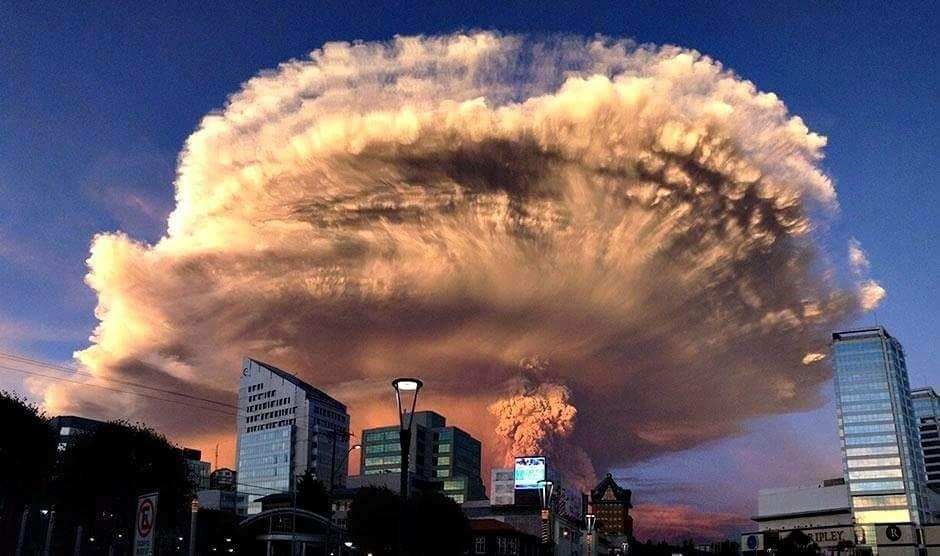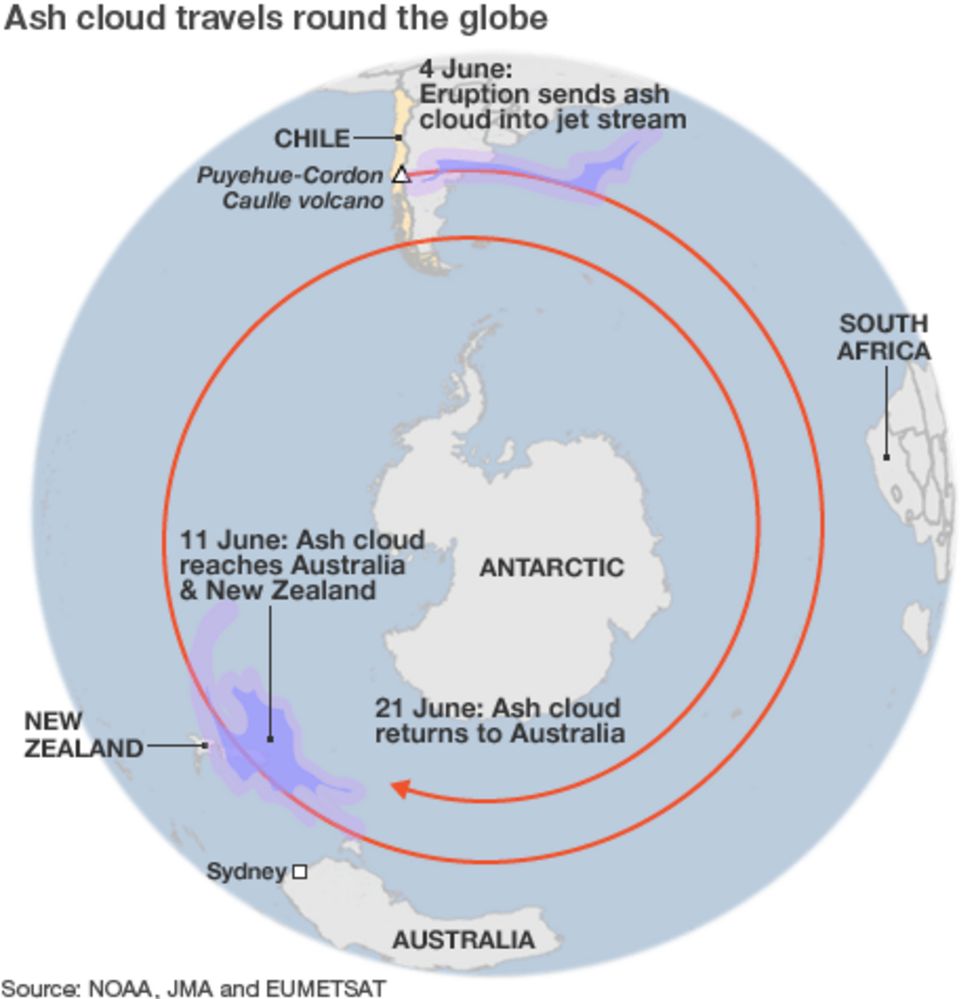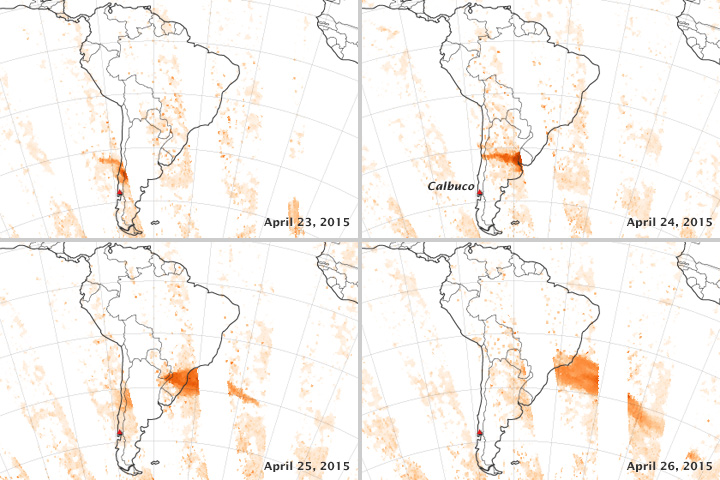
Photo of the 2015 explosion of Calbuco Volcano in Chile, by Keraunos ob, posted on the Earth of Fire blog by Bernard Duyck.
By Jo Nova
A year ago I wrote about the odd link between the Hunga Tonga volcanic dust and floods in Australia, but perhaps volcanic dust also played a role in the savage rain bombs of 1893 that caused the infamous floods of Brisbane?
After Hunga Tonga erupted last year, about a week later unusually heavy rain started falling over Australia — even washing out the Indian Pacific Railway line connecting East and West Australia. A month later and the dust had gone around the world and returned to give us glorious sunsets followed by more rain bombs.
So it may be just a coincidence, but the second heaviest Australian rain bomb was on Feb 3, 1893. And three weeks earlier on January 7th the Calbuco Volcano in Chile had its largest eruption in the last 130 years?
In 1893 an astonishing, flabbergasting day occurred, where 907mm of rain dropped from the sky on Crohamhurst in Queensland (that’s nearly 36 inches!). It came in an astonishing week, where the heavens dumped 2 meters of rain (6.6 ft) in just four days subsequently causing some of the worst flooding Brisbane has ever seen as the waters collected and flowed downstream.

Brisbane floods 1893, Poul C Poulsen. | ANMM Collection |
From February 1 to 4 a total of 1,964 mm of rain fell. There were cyclones in the area, but these were two weeks earlier, so unlikely to be the cause of such a downfall. Was it seeded by volcanic dust? Maybe.
h/t El Gordo for suggesting Calbuco
Volcanoes in Chile can certainly send dust over Australia
In 2011, the ash from a volcano-next-door in Chile, Puyehue-Cordon Caulle, shut down flights in Sydney a week after going off. The ash then travelled right around the world and came back to shut flights down again 10 days later — this time at a lower altitude.

In 2011, ash travelled around the world twice — taking 7 days and then another ten to do the second lap. BBC
So this track (through Sydney) would have been too far south to reach Brisbane, but other times volcanic dust travels north. (The path in the map above seems figurative, not literal…).
The two volcanoes we are discussing in Chile lie at 41 degrees south compared to Crohamhurst in Queensland, Australia, which is only 27 degrees south and much closer to the equator. But in a smaller 2015 explosion, the dust from Calbuco was tracked moving north from 41°S up to about 30°S within just a few days — putting it a lot closer to the right latitude for Southern Queensland. With no satellites in 1893, we don’t know where the dust went, but we know there was probably a lot of it, and it went somewhere…
In 1893 the Calbuco explosion was a large one:
According to the Department of Geological and Mining Engineering at Michigan Tech:
The first historically documented eruption began on 7 January 1893 and lasted until mid-January 1894. The initial phase of this eruption was violently explosive and led to the generation of destructive lahars. During the later stages of the activity, the volcano may have extruded lava although this is not certain.
Minor eruptions occurred in 1895, 1906, on 22 April 1907, in March 1909, and in 1911-1912; none of these events produced lava flows or lahars.
In 2015 a smaller eruption at Calbuco in 2015 sent dust to the North:
On 23 April at around 2330, a third period of activity resulted in ash plumes rising 2 km and drifting NE and E. On 24 April the ash plume continued to rise 2 km and explosions were detected. News articles noted that international travel was disrupted; flights in and out of several major cities were delayed or canceled. Thermal anomalies, based on MODIS satellite data, were also observed during 23-24 April.
According to one news report, ash from the eruption reached southern Brazil on 25 April, prompting some airlines to cancel flights in and out of Santiago, Buenos Aires, and Montevideo. Some houses in areas near the volcano had collapsed from the weight of the ash. Sporadic explosions caused continued ash plumes 25 April, but to a lower height of 400 m. Seismicity declined during 26-27 April; ash rose 1.5 km, and drifted NE and SE.
By 28 April, a satellite-based estimate of sulfur dioxide emissions was 0.3-0.4 Tg (Tg is one million metric tons), detected as high as 21 km altitude.
NASA tracking shows the plume from Calbuco can travel north quickly.

Tracking the Sulfur Dioxide from Calbuco, NASA
The CSIRO discusses the extreme weather events of 1893 but doesn’t mention any volcanoes
According to the CSIRO there were a series of tropical cyclones (TC) in Jan and Feb 1893, but none of the dates fit the monster downpour on Feb 1-4. The cyclone on Jan 22 would have soaked the ground, but not caused big rain nearly two weeks later.
A TC during 21–22 January 1893 passed just east of Brisbane where gusts reached 57 knots (28 m/s) with the MSLP down to 985.1 hPa at 1700UTC 22 January 1893 (Fig. 2). There was a large storm surge in Moreton Bay to 0.58 m (Gourlay 1981) with widespread sea damage at Sandgate, Cleveland and Southport. Heavy rain fell across SEQ with the heaviest 24-h total of 179.8 mm at Mount Tamborine. There were two deaths in northern NSW with heavy gales at Lismore, Casino, Grafton and Sydney.
For Brisbane, the monster rain collected into a major flood. Indeed, many floods in 1893 — on the 5th, 12th and 19th February, and again on the 12th of June. The flooding on the 5th of Feb was the second highest after the 1841 floods.
3.3 First 1893 flood – possibly the worst in Australian history
The largest recorded flood in Brisbane City was 8.35 m on 5 February 1893 (Brunt 1958; Newman 1958) and the unprecedented conditions resulted in at least 30 fatalities. Early on 3 February a 15.2-m high wall of water was observed to roar down a Brisbane River gorge. The water tumbled down the Stanley River to its junction with the Brisbane River. Nearby was Caboonbah, the residence of grazier Mr. H.P. Somerset. Caboonbah (Fig. 3a ) is on high ground, with a view of the Brisbane River below its junction with the Stanley River. Crohamhurst (on the Stanley River) recorded 907 mm of rain in the 24 h to 9 am 2 February 1893 and this was an Australian record for 24-h rainfall up until 1979. The location of Crohamhurst and the 96-h rainfall is shown in Fig. 3b .
For whatever it’s worth there were no mass rain events in 1893 in Melbourne or Sydney. If La Nina was the main culprit (or widespread volcanic dust) we would have expected to see major rain there too.
We can’t say much about a path of a dust cloud 130 years ago — only that it might have been in the right place at the right time.
Related:
- The devastating floods of Brisbane in 1893
- There were Bigger Floods and Rain-bombs in the 1800’s
- Did volcanic dust from Hunga Tonga cause flooding in Australia?
- Calbuco Volcano lies at 41.33°S 72.61°W